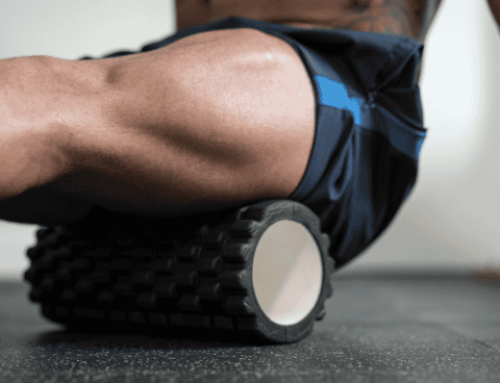Traditionally a good athlete can be defined as someone who is just in great shape. This is simply incorrect. A good athlete is someone who possesses a specific skill set or the ability to perform a series of skills at a high level to boost sports performance. Just because you are in great shape or your sport requires you to be in great condition does not mean you are a good athlete.
Conditioning is part of Athleticism, as you will soon see, but it’s just one piece of the puzzle, and there are many others to make the puzzle complete. The more of each of these skills that a specific individual or sport requires or possesses, the more athletic each is. It’s that simple.
Below are 10 specific skills that help compose Athleticism. With an outline how to design a program for any type of athlete who wants to become more athletic so that they have a far greater chance of excelling in their sport. When I think of Athleticism, it helps me to envision a brainstorming diagram that we use to utilize in grade school, with the word Athleticism in the middle as the central part. And then branching off of the diagram, you have all of the specific skills that help form athleticism, such as speed, power, strength, etc.
10 Skills That Compose Athleticism
- Power
- Strength
- Speed
- Agility and Quickness
- Conditioning
- Flexibility and Mobility
- Balance and Control
- Reaction Time
- Recovery Capacity
- Psychological Factors
11 Rules to Design an Athletic Program
Rule #1: Train Movements, not Muscles. The truth is that athletes need to move in all directions using multiple muscle groups simultaneously with gross movements. Sure we do some isolation type stuff and use machines, but a vast majority of the program consists of developing total movements so that they perform better in their respective sport. It specific and prepares them for what they will encounter in competition.
Rule #2: Perform Lower, Upper, and Fully Body Workout. Full Body workouts are great if you are coming off of a layoff or injury, or you are a raw beginner. It works! The eventual and inevitable downfall, though, is that there is not enough time allowed to recover from these workouts if performed correctly. Larger muscle groups take 72 hours for general recovery, and smaller ones require 24 hours before they are fully restored. I think alternating upper and lower body splits are a little better for this reason, but their downfall is that they do not provide the neuromuscular system and all of its working components adequate stimulation, and our skillset declines. So by natural default, a lower, upper, and full-body sequence is the best thing for an ATHLETE. More specifically, a team sport athlete who requires more Athleticism and this type of program. Moreover, three days is the coincidental frequency to get in all that we need without compromising results. It reflects the High Low Model made famous by the track and field culture, and now Joel Jamieson.
The reason being it provides an optimal recovery to training ratio (3 on-4 off), and in the real world of training, it’s what athletes can tolerate, according to my data collection over the past several years. Athletes train six days per week with a complete day of restoration, so they are still doing something on their off days, just not killing themselves in the gym. Recovery is where our body develops, so it’s a huge component of any training system.
Rule #3: Rest 1-2 days between workouts. I just covered this, so we are good.
Rule #4: Rest 3 days between Upper and Lower Body Workouts. I’ve discussed this one too. If you analyze it, you will notice that the full-body workout at the end of the week does not allow the upper body region the appropriate period of recovery to be ready in 2 days. To offset this, we buffer the intensity and volume in the full-body workout to still enable a solid training effect. The fact is that our legs tend to adapt and respond better to higher volume versus our core and upper body. I suppose the mechanism here is because our legs are our foundation, and with the number of foot contacts completed by athletes, we would require a greater workload for them to have reason to adapt and develop more. Nevertheless, this concept fits perfectly into an athletic system and it still allows the athlete to compete at a high level on reduced rest from the previous workout. This way we train through the entire load and rep spectrum and leave no stone uncovered.
Rule #5: Rest 7-10 days between Max Effort Upper or Lower Body Lifts. Westside Barbell, the training culture/entity, also notes in their book that I paraphrased earlier that “defensive inhibition” of our body’s Central Nervous System occurs if we train a movement or muscle group more than 2x per week, or for 3 weeks straight. This means that our body will shut itself down till it is ready to resume training at this level of effort again. Another reason for this rule is due to the spinal erectors and their poor recovery rates compared to other muscle groups. The erectors require 7-10 days to fully heal and there are several of them that encompasses the entire back. That’s a lot of ground for our cardiovascular system to cover and repair and it takes some time. This is also one of the primary reasons why I truly believe people injure their backs while squatting and deadlifting. They get too motivated, they are ignorant, and they do too much for what our physiology dictates.
Rule #6: Rest 4 days between Lower Body Workout and Long Acceleration Work. This information is re-occurring but applies to multiple rules. Defensive inhibition occurs if we train a part of the body extremely hard more than 2x per week. One day of each of these with both of them spaced out at separate ends of the week works great and is ideal for an athlete and their performance.
Rule #7: Rest 1-2 days between Short and Short Acceleration Work. The distances are short, although the effort is high, and as you can see in the brackets above, we rotate the type of short acceleration work we perform so that we do not create as much pattern overload each subsequent session. This has worked phenomenally for results and from an injury prevention standpoint.
Rule #8: Rest 3-4 days between Short and Long Acceleration Work. The exception is Agility and the 40-yard dash. We train spd-20 yard dash, Agility, and then spd-40 yard dash each week. The same reasons mentioned in rule #7 would apply here. Different directional training focus and not as much repetitive stress, thus less recovery required.
Rule #9: Rest 7 days between Long and Long Acceleration Work. I must credit Joe DeFranco for his observation and discovery that the CNS requires 7-10 days before the body shuts down. For the geeks like me out there. The muscle spindles that contract our muscles will reduce activity, our fast-twitch muscle fibers fatigue easy, the movement centers of our brain (brain stem, etc.) will not be fully fresh, and so on, and the neuromuscular junctions or gaps between the nerve’s end and the muscles surface where a signal is sent is impaired. All of this and more will create less speed in the athlete. It’s imperative that athletes only test speed once per week at medium to long sprint distance (40-100 yards) if they want a superior result. This is one of the biggest issues in speed culture today. I think it is one of those things that you have to go through to appreciate, like with so many things in life. My research would support Joe’s, and I was unable to find a study for this, so I did my own.
Rule #10: Rest 3-4 days between Long and Short Acceleration Work. This is just simple math. We know we need 7 days before we can train long after training long, so if we rest half that time, we could put half the work.
Rule #11: Condition 2x per week at a high intensity and 1 x per week and a low-intensity. Paraphrasing world-renown strength and conditioning coach Michael Boyle: It is significantly easier to make an explosive athlete better conditioned than it is to make a well-conditioned athlete explosive. Truer words have never been spoken, and this guy has conditioned more athletes than you or I ever will. The current model in athletic training is completely antagonistic to this, unfortunately. Just remember that conditioning is the one skill you lose the fastest but regain the fastest. Surprisingly too many, my advanced and professional athletes will not do ANY specific conditioning work until their sports pre-season. None. Please read that. Many would wonder how we improve, but it’s for the reasons above, and there is plenty of stimulus in the rest of the training we complete to improve conditioning without training it directly. The suggested frequencies are more than enough and will even help your athletes score better on the tests their coaches and institutions conduct when they arrive back to campus.
I hope this article was insightful into properly structuring an athlete’s program for success. And if you were not sure, you also now know the formal definition of a good athlete. We have more than cheapened the term and applied it to anyone who competes in the sport. Follow this general layout I’ve provided, and you will be pleased with the progress your athletes make.
Scientific References:
#1-Simmons, Louie. The Westiside Book of Methods. Finland: 2007. Action Printing
#2-Hatfield, Fred. Fitness: The Complete Guide.
#3-Boyle, Mike. Designing Strength Training Programs and Facilities.
RECOMMENDED FOR YOU
MOST POPULAR
Traditionally a good athlete can be defined as someone who is just in great shape. This is simply incorrect. A good athlete is someone who possesses a specific skill set or the ability to perform a series of skills at a high level to boost sports performance. Just because you are in great shape or your sport requires you to be in great condition does not mean you are a good athlete.
Conditioning is part of Athleticism, as you will soon see, but it’s just one piece of the puzzle, and there are many others to make the puzzle complete. The more of each of these skills that a specific individual or sport requires or possesses, the more athletic each is. It’s that simple.
Below are 10 specific skills that help compose Athleticism. With an outline how to design a program for any type of athlete who wants to become more athletic so that they have a far greater chance of excelling in their sport. When I think of Athleticism, it helps me to envision a brainstorming diagram that we use to utilize in grade school, with the word Athleticism in the middle as the central part. And then branching off of the diagram, you have all of the specific skills that help form athleticism, such as speed, power, strength, etc.
10 Skills That Compose Athleticism
- Power
- Strength
- Speed
- Agility and Quickness
- Conditioning
- Flexibility and Mobility
- Balance and Control
- Reaction Time
- Recovery Capacity
- Psychological Factors
11 Rules to Design an Athletic Program
Rule #1: Train Movements, not Muscles. The truth is that athletes need to move in all directions using multiple muscle groups simultaneously with gross movements. Sure we do some isolation type stuff and use machines, but a vast majority of the program consists of developing total movements so that they perform better in their respective sport. It specific and prepares them for what they will encounter in competition.
Rule #2: Perform Lower, Upper, and Fully Body Workout. Full Body workouts are great if you are coming off of a layoff or injury, or you are a raw beginner. It works! The eventual and inevitable downfall, though, is that there is not enough time allowed to recover from these workouts if performed correctly. Larger muscle groups take 72 hours for general recovery, and smaller ones require 24 hours before they are fully restored. I think alternating upper and lower body splits are a little better for this reason, but their downfall is that they do not provide the neuromuscular system and all of its working components adequate stimulation, and our skillset declines. So by natural default, a lower, upper, and full-body sequence is the best thing for an ATHLETE. More specifically, a team sport athlete who requires more Athleticism and this type of program. Moreover, three days is the coincidental frequency to get in all that we need without compromising results. It reflects the High Low Model made famous by the track and field culture, and now Joel Jamieson.
The reason being it provides an optimal recovery to training ratio (3 on-4 off), and in the real world of training, it’s what athletes can tolerate, according to my data collection over the past several years. Athletes train six days per week with a complete day of restoration, so they are still doing something on their off days, just not killing themselves in the gym. Recovery is where our body develops, so it’s a huge component of any training system.
Rule #3: Rest 1-2 days between workouts. I just covered this, so we are good.
Rule #4: Rest 3 days between Upper and Lower Body Workouts. I’ve discussed this one too. If you analyze it, you will notice that the full-body workout at the end of the week does not allow the upper body region the appropriate period of recovery to be ready in 2 days. To offset this, we buffer the intensity and volume in the full-body workout to still enable a solid training effect. The fact is that our legs tend to adapt and respond better to higher volume versus our core and upper body. I suppose the mechanism here is because our legs are our foundation, and with the number of foot contacts completed by athletes, we would require a greater workload for them to have reason to adapt and develop more. Nevertheless, this concept fits perfectly into an athletic system and it still allows the athlete to compete at a high level on reduced rest from the previous workout. This way we train through the entire load and rep spectrum and leave no stone uncovered.
Rule #5: Rest 7-10 days between Max Effort Upper or Lower Body Lifts. Westside Barbell, the training culture/entity, also notes in their book that I paraphrased earlier that “defensive inhibition” of our body’s Central Nervous System occurs if we train a movement or muscle group more than 2x per week, or for 3 weeks straight. This means that our body will shut itself down till it is ready to resume training at this level of effort again. Another reason for this rule is due to the spinal erectors and their poor recovery rates compared to other muscle groups. The erectors require 7-10 days to fully heal and there are several of them that encompasses the entire back. That’s a lot of ground for our cardiovascular system to cover and repair and it takes some time. This is also one of the primary reasons why I truly believe people injure their backs while squatting and deadlifting. They get too motivated, they are ignorant, and they do too much for what our physiology dictates.
Rule #6: Rest 4 days between Lower Body Workout and Long Acceleration Work. This information is re-occurring but applies to multiple rules. Defensive inhibition occurs if we train a part of the body extremely hard more than 2x per week. One day of each of these with both of them spaced out at separate ends of the week works great and is ideal for an athlete and their performance.
Rule #7: Rest 1-2 days between Short and Short Acceleration Work. The distances are short, although the effort is high, and as you can see in the brackets above, we rotate the type of short acceleration work we perform so that we do not create as much pattern overload each subsequent session. This has worked phenomenally for results and from an injury prevention standpoint.
Rule #8: Rest 3-4 days between Short and Long Acceleration Work. The exception is Agility and the 40-yard dash. We train spd-20 yard dash, Agility, and then spd-40 yard dash each week. The same reasons mentioned in rule #7 would apply here. Different directional training focus and not as much repetitive stress, thus less recovery required.
Rule #9: Rest 7 days between Long and Long Acceleration Work. I must credit Joe DeFranco for his observation and discovery that the CNS requires 7-10 days before the body shuts down. For the geeks like me out there. The muscle spindles that contract our muscles will reduce activity, our fast-twitch muscle fibers fatigue easy, the movement centers of our brain (brain stem, etc.) will not be fully fresh, and so on, and the neuromuscular junctions or gaps between the nerve’s end and the muscles surface where a signal is sent is impaired. All of this and more will create less speed in the athlete. It’s imperative that athletes only test speed once per week at medium to long sprint distance (40-100 yards) if they want a superior result. This is one of the biggest issues in speed culture today. I think it is one of those things that you have to go through to appreciate, like with so many things in life. My research would support Joe’s, and I was unable to find a study for this, so I did my own.
Rule #10: Rest 3-4 days between Long and Short Acceleration Work. This is just simple math. We know we need 7 days before we can train long after training long, so if we rest half that time, we could put half the work.
Rule #11: Condition 2x per week at a high intensity and 1 x per week and a low-intensity. Paraphrasing world-renown strength and conditioning coach Michael Boyle: It is significantly easier to make an explosive athlete better conditioned than it is to make a well-conditioned athlete explosive. Truer words have never been spoken, and this guy has conditioned more athletes than you or I ever will. The current model in athletic training is completely antagonistic to this, unfortunately. Just remember that conditioning is the one skill you lose the fastest but regain the fastest. Surprisingly too many, my advanced and professional athletes will not do ANY specific conditioning work until their sports pre-season. None. Please read that. Many would wonder how we improve, but it’s for the reasons above, and there is plenty of stimulus in the rest of the training we complete to improve conditioning without training it directly. The suggested frequencies are more than enough and will even help your athletes score better on the tests their coaches and institutions conduct when they arrive back to campus.
I hope this article was insightful into properly structuring an athlete’s program for success. And if you were not sure, you also now know the formal definition of a good athlete. We have more than cheapened the term and applied it to anyone who competes in the sport. Follow this general layout I’ve provided, and you will be pleased with the progress your athletes make.
Scientific References:
#1-Simmons, Louie. The Westiside Book of Methods. Finland: 2007. Action Printing
#2-Hatfield, Fred. Fitness: The Complete Guide.
#3-Boyle, Mike. Designing Strength Training Programs and Facilities.












